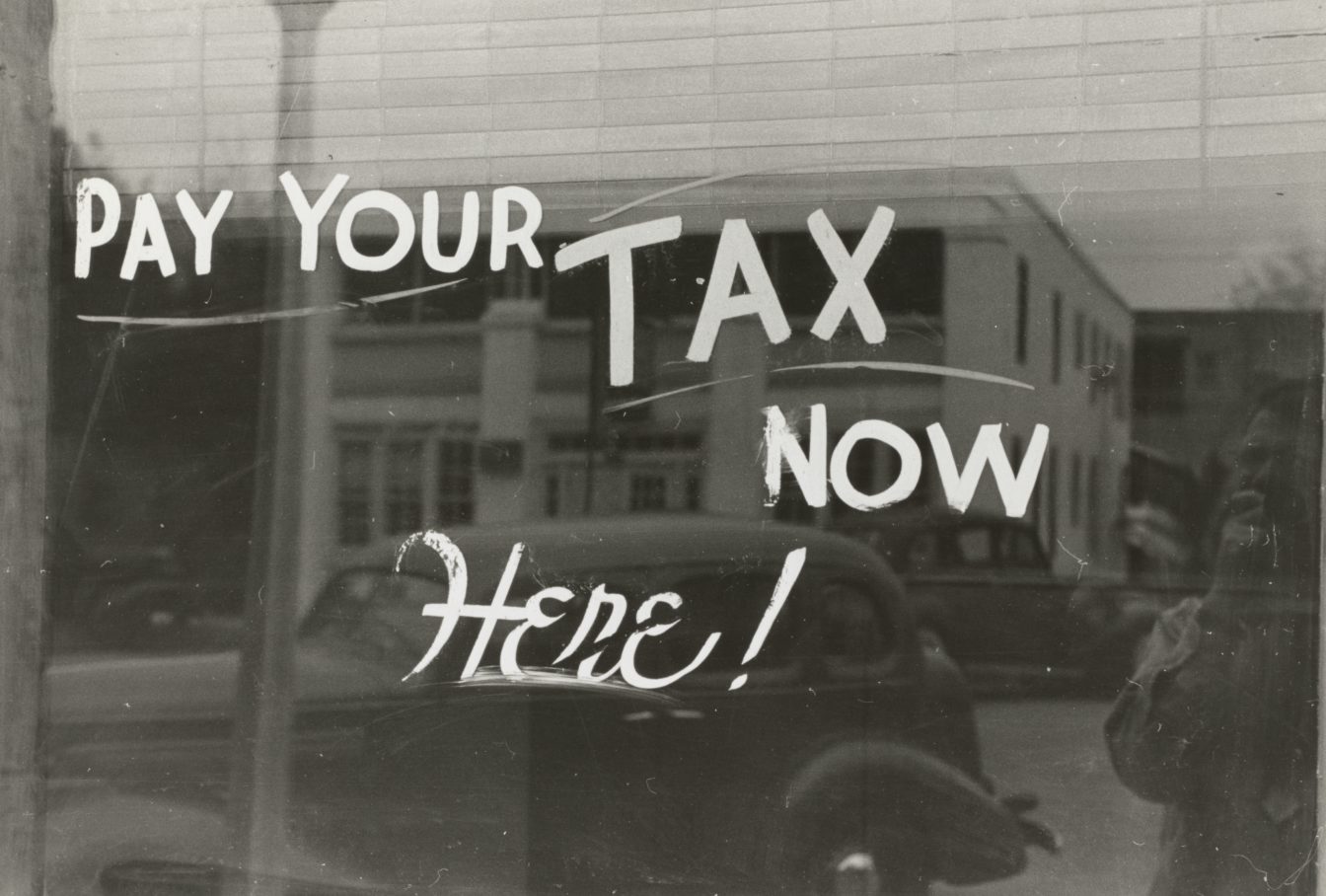TMNZ virtual roadshow: Tony Alexander talks post-COVID-19 economic recovery

The increase in New Zealand’s net debt to GDP ratio over the next four years is not the bogeyman some are making it out to be, nor will the Government necessarily have to increase taxes to pay off what they are borrowing.
That’s according to one of New Zealand’s leading and respected economists, Tony Alexander, who last week discussed a range of topics relating to the current and post-COVID-19 economic landscape as part of TMNZ’s first virtual roadshow for the year.

The net debt to GDP ratio increase
The Budget shows New Zealand’s net debt to GDP ratio is forecast rise to 30.2 percent this year and peak at 53.6 percent in 2023.
This is up from 19 percent last year.
Unsurprisingly, this has led to concern in some quarters.
However, Alexander (pictured left) says it’s important to remember there is no permanent increase in the size of the Government’s spending as a proportion of the New Zealand economy.
“Some people may be looking at this as the Government spending a lot more. Yes, in the short term they are, but in about five years’ time the ratio of the Government’s spending to the size of our economy will pretty much be back to where it was [during the] last fiscal year.
“That gives me assurance that Grant Robertson does want to continue along the lines of finance ministers in New Zealand since the early 1990s of trying his best as possible to get good control over the quantity, and hopefully quality, of Government spending going forward.”
Alexander says that credit rating agency Standard & Poor’s believes New Zealand’s economic outlook is better than The Treasury is forecasting.
They are showing no signs of issuing a potential downgrade in the wake of the Budget, he says.
A peak net debt to GDP ratio of 53.6 percent is still lower than where other economies are at currently. Some are sitting as high as 110 percent.
“Even after all this, we’re still going to be in a very good position,” says Alexander.

Tax hikes not the only way to pay down debt
In terms of how the Government will go about reducing its level of debt, there is talk they may have to introduce new or increase existing taxes.
That's because its tax revenue is forecast to drop.
The Treasury expects tax revenues to fall from $86.5 billion for the year to June 2019 to $80.1 billion dollars for the year to June 2021. Over the period to June 2024, it expects tax revenue to be more than $15 billion lower net of the effect of the reduced GDP over the period.
However, Alexander believes it is possible for the Government to reduce its debt without tinkering with the tax system.
He bases this claim on past experiences.
For instance, Alexander cites successive National- and Labour-led administrations managing to decrease New Zealand’s net debt to GDP ratio from 55 percent in 1992 to just six percent in 2008 through controlled, responsible spending.
“New Zealand has an established record of good fiscal control under both Labour and National governments,” he says.
“My expectation is we will see the net debt to GDP ratio in New Zealand decreasing over an extended period, that it’ll be a gradual process and it will be able to be achieved with spending restraint, rather than whacking GST up to 20 percent or introducing a new 46 percent top marginal tax rate or that sort of thing.”
Increasing taxes in the future would also be counter-intuitive to the Government’s goal of trying to get people to spend money now, when confidence is low.
“If they did [raise tax], we would spend less in anticipation of higher taxes down the track.”
Hear more from Tony Alexander
The affable Alexander spoke at length about several different topics during his informative, wide-ranging session with TMNZ.
These include:
- His thoughts on the Government’s Budget and The Treasury’s economic forecast.
- How the New Zealand dollar will fare in the next 12 to 18 months.
- Why the party is over for tourism and what the collapse of that industry might mean for regional New Zealand.
- When he feels banks will resume lending again.
- Why quantitative easing does not cause hyperinflation, but may push up asset market prices.
- The chances of the Reserve Bank of New Zealand resorting to a negative official cash rate.
- The outlook for the property market.
Trust us, this is one hour worth your time.
You can watch Alexander’s full webcast here.
Next virtual roadshow – register now
Richard Owen from IRD will be joining us as part of our next TMNZ virtual roadshow on Wednesday 17 June.
Owen is the small and medium enterprises customer segment lead at the department. He will cover tax policy on COVID-19 and the impact for IRD, tax agents and taxpayers.
If you have questions about the remission of UOMI, the carrying back of tax losses or the Small Business Cashflow Loan Scheme, then you won't want to miss this.
You can register here. Get in quick because spaces are going fast.
Webinars to get businesses geared up for the post-COVID-19 environment
From May until October this year, TMNZ will offer a new webinar that focuses on a different topic that is sure to provide value in a post-COVID-19 environment. Whether you are a business owner or tax agent or curious to know what the future will look like, be sure to come along and invite your team too. Learn more.
UOMI remission guidance: IRD overlooks provisional tax scenario

Question: What is the amount on which IRD will remit interest (UOMI) at the date of the final provisional tax instalment if someone outside of safe harbour is unable to pay on time due to COVID-19?
The answer: We cannot say for certain as this is a scenario IRD has yet to address in its guidance (as of today’s date).
A taxpayer expecting their RIT for the year to be $60,000 or more must pay the remaining balance to settle their liability at the date of their final provisional tax instalment to avoid incurring UOMI.
For those with a 31 March balance date, 7 May 2020 is the final instalment for the 2020 tax year.
A problem that arises is someone might not know the actual RIT for the year by this date. In fact, it might be several months after the year-end before they determine this figure.
As paying the remaining balance on 7 May 2020 will therefore require some guesswork, there is a chance they could miscalculate and end up underpaying.
Example
A taxpayer expects to have RIT of $80,000 in the 2020 tax year and must pay the final balance on 7 May 2020 to avoid UOMI.
They believe the final balance to settle the RIT for the year will be $40,000.
However, because of COVID-19, they are unable to pay on 7 May 2020 and decide to seek assistance from IRD.
The department agrees to grant a remission of UOMI on the $40,000 for eight months under s183ABAB Tax Administration Act 1994.
However, when the taxpayer finalises their return eight months later, it turns out their 2020 RIT is $85,000.
This means they should have paid $45,000 on 7 May 2020 to settle the liability for this year.
All of which begs the question: How will the remission of UOMI work in this instance?
Below we look at three possible approaches IRD may take.
Option one
IRD might only agree to remit UOMI on the $40,000 because:
- This is what the taxpayer determined what was due and payable on 7 May 2020 under sRC10 (5) and (6) Income Tax Act 2007; and
- The taxpayer should have had a reasonable expectation of their final liability for the 2020 year given the 7 May 2020 instalment is due after their year-end.
Option two
IRD may take an approach where its UOMI remission at the date of the final instalment applies to the lesser of:
- The amount calculated by the taxpayer to the settle the liability ($40,000); or
- The amount that is required to settle the liability ($45,000).
In both options one and two, the taxpayer will liable for UOMI on the $5000 shortfall from 8 May 2020 until this is paid.
Option three
IRD might be generous and agree to remit UOMI on the final balance of $45,000.
If that’s the case, a taxpayer unable to pay on time due COVID-19 receives a major concession for their miscalculation.
Flexitax® is your safeguard
However, this is merely speculation at this stage.
Until IRD clarifies its position, a taxpayer may wish to consider entering a Flexitax® arrangement as a safeguard.
If the department agrees to a full UOMI remission, cool bananas. There’s no requirement to follow through with the arrangement.
If IRD only agrees to waive UOMI on the amount calculated by the taxpayer, then Flexitax® lets them significantly reduce the interest cost they face on any additional tax payable.
As always, we look forward to the department’s clarification.
Over to you, IRD.
COVID-19: How tax pooling can still help taxpayers

IRD may be taking a more flexible approach in terms of its interest (UOMI) remission for taxpayers grappling with the financial impact of COVID-19 – but any request for relief will still be at its discretion and on its terms.
As such, an IRD-approved tax pooling provider such as Tax Management NZ (TMNZ) can assist with provisional tax this month if someone:
- Misses out on a remission of UOMI.
- Wants greater payment flexibility to manage cashflow during this difficult time than what they'll receive if entering an IRD arrangement.
- Prefers not to deal with the taxman.
IRD: ‘If you say you can’t pay, we’ll believe you’
During a Chartered Accountants Australia and New Zealand webcast last month, IRD said they will take a taxpayer at their word if they tell them they cannot pay tax on time due to COVID-19 and accept most applications to waive UOMI if they are for no more than two years from the date the legislation was enacted (this being 25 March 2020).
Taxpayers DO NOT need to have exhausted all financing options before seeking assistance either.
This indicates IRD will be more flexible in its remission of UOMI. It was certainly a different tone to what was found in the general guidance document they issued last month.
And that’s not a bad thing for those reeling from the effects of COVID-19.
Our view
However, we believe the department's approach to the remission of UOMI will fall somewhere in the middle. It won't be as heavy-handed as their general guidance suggest, nor will it be a no-questioned-asked waiver for all.
As such, with provisional tax instalments due on 7 May and 28 May, we explain how tax pooling can be of assistance to taxpayers who are short on cash given the current economic climate.
Below we compare the service to IRD’s remission of UOMI.
Tax pooling offers more flexibility
With Flexitax®, taxpayers have the complete flexibility to pay what they want, when they want for up to 13 months.
While IRD is applying a high-trust approach in terms of applications and offering a remission of UOMI until 25 March 2022, it may still determine the type of payment arrangement it strikes with a taxpayer, the length of that arrangement and the date(s) by which someone must make payment(s) after it reviews someone's request.
There is also an expectation for anyone seeking relief to pay the tax they owe as soon as practicable. Remember, this is not a tax holiday. Only in extreme circumstances will someone be granted 22 months to pay.
If someone cannot honour their arrangement, they will need to contact IRD to renegotiate an extension or request a write-off. They will have to show they've made every possible effort to pay their liability by the agreed date. Whether someone is granted an extension or write-off will come down to IRD’s discretion.
Given that, even though TMNZ interest applies during any Flexitax® arrangement, some may find paying this negligible seeing as it gives them the freedom to manage cashflow by letting them make payments as and when it suits them, rather than having to meet the rigid terms of IRD’s payment arrangement.
A taxpayer has 75 days past their terminal tax to settle any 2020 income tax they owe with TMNZ. They only pay for the tax they require and can easily amend the arrangement to reflect this.
TMNZ’s interest cost can be significantly lower than the 8.35 percent IRD currently charges when someone misses a tax payment. It is very competitive in comparison to most other forms of credit or finance.
And with tax pooling able to eliminate late payment penalties, this makes us the next best option for anyone wanting the flexibility to manage their cashflow.
Tax pooling is easier to arrange
Someone can complete a Flexitax® request in less than five minutes by phoning TMNZ or via their online dashboard. If emailing us, we can have the arrangement ready to go within five hours of receiving someone’s correspondence.
It is also light touch in terms of organising. After all, approval is guaranteed, and no security or financial information is required.
The only thing TMNZ needs is a taxpayer’s IRD number.
Compare that to IRD.
A taxpayer applying for a remission of UOMI will require some financial documentation before they make their submission. While IRD may not ask for this information in all situations – they say it will only be in cases of serious hardship where someone is requesting a write-off of the tax they owe– it’s important to have it ready just in case.
IRD will not finalise and approve anything until it completes a review of the application. That can take three working days or more.
The department is also experiencing unprecedented query volumes right now due to COVID-19, so this may mean getting a response takes longer.
Tax pooling is your safety net
We encourage those seeking IRD relief to enter a Flexitax® request just to be on the safe side.
That’s because there are no guarantees IRD will accept someone’s application for UOMI remission. Again, discretion is key.
If the department accepts the request for relief, then great. There’s no obligation to complete the arrangement.
On the other hand, if IRD declines someone’s request for a remittance of UOMI, a taxpayer can rest safe in the knowledge that they have a way to defer their upcoming 2020 provisional tax payment until June next year, while eliminating late payment penalties and reducing their interest cost.
Please contact TMNZ today if you wish to know more about Flexitax®.
COVID-19: Additional tax relief announced

IRD will have the flexibility to change statutory tax deadlines as part of new measures announced to provide relief for taxpayers during the COVID-19 pandemic.
Plans are also afoot to introduce a temporary tax loss carry-back scheme and relax the tax loss continuity rules.
Today’s announcement by the Government recognises taxpayers require more assistance during what is proving to be a financially trying time.
It follows the tax relief measures they unveiled last month.
The Government plans to introduce legislation containing these changes during the week beginning 27 April.
Detail about the new measures is light at this stage. IRD is not answering specific questions as they’re currently engaging with the wider tax community to determine how things will work.
Nonetheless, below is a summary of what we currently know about these new tax measures.
Giving IRD the power to change deadlines
IRD will have greater flexibility to temporarily change statutory tax dates, timeframes and procedural requirements for businesses and individuals impacted by COVID-19.
This discretionary power will be introduced via an amendment to the Tax Administration Act 1994.
While IRD will publish further guidance in the coming weeks following consultation with tax advisors, this may enable them to extend the deadlines for filing tax returns and paying provisional and terminal tax.
At this stage, the power will apply for a period of 18 months.
Temporary tax loss carry-back scheme
This will allow a taxpayer expecting to make a loss in either the 2020 or 2021 tax year to estimate that loss and use it to offset profit in the previous year.
They will also receive a refund of the tax paid in the previous profitable year.
A taxpayer will be able to cash out all or some of their losses in the 2020 or 2021 tax year. Under current rules, they can only carry them forward to a year when they make a profit.
They will have the option of re-estimating their provisional tax after the date of their final instalment if they require additional time to work out any estimated loss for the 2021 tax year.
IRD will be consulting with tax advisors to ensure the law and administrative guidance are clear.
Please note the Government is also considering a permanent loss carry-back scheme. It would apply from the 2022 tax year onward.
IRD says there will be public consultation about this during the second half of 2020.
Relaxing the tax loss continuity rules
Currently, a company cannot keep its tax losses if it has more than a 51 percent change in ownership.
However, the introduction of a ‘same or similar business’ test will mean they can and help make businesses seeking investment to keep afloat during the COVID-19 pandemic more appealing to investors, thus improving their access to capital.
IRD says the criteria which must be met to satisfy this requirement is modelled on Australia’s rules. This means a company must continue in the same or a similar manner it did before any change in ownership.
Again, IRD is engaging with the tax community to ensure the law is clear.
The Government intends to pass legislation relaxing the tax loss continuity rules before the end of March 2021.
They will apply for the 2021 tax year onward.
More information
You can find out more about today’s announcement by the Government via the links below.
- COVID-19 (novel coronavirus) – tax changes to support businesses
- Supporting small and medium sized enterprises during the COVID-19 crisis
- Government backs business through COVID-19
TMNZ will continue to update you with any new tax developments relating to COVID-19.
COVID-19 update: Devil in the detail with UOMI remission

Update as at 14 April 2020 after IRD clarified its position following the publication of this article
Someone who is struggling to pay tax on time due to COVID-19 will have to engage with IRD and agree to the terms of a payment plan if they want to receive a remission of interest (UOMI).
Given that, they might find setting up a Flexitax® arrangement with TMNZ much easier.
But more on that later.
The criteria for UOMI remission
First, IRD has issued general guidance on the requirements taxpayers must meet in order to be eligible for a remission of UOMI on tax obligations due after 14 February 2020.
To qualify, someone must satisfy the department that they are:
- Physically unable to make their payment when it’s due because of COVID-19; or
- Struggling financially to pay on time because of the economic impact caused by the outbreak of the deadly virus.
IRD also requires taxpayers seeking relief to both contact them and pay the tax they owe “as soon as practicable”.
Now on the surface that doesn’t sound too onerous. However, this is the taxman we’re talking about and the devil always lurks in the detail.
And, when you delve a little deeper, it appears that they’re asking a lot from anyone seeking assistance due to COVID-19.
What does ‘struggling financially’ mean?
IRD says there must be a reduction in someone’s income or revenue as a result of COVID-19 which prevents them from paying their tax on time and in full.
The extent to which there needs to be a reduction in income or revenue is not explicitly set out.
IRD will look at GST and other tax return information to help it get a picture of someone’s financial affairs when determining the extent of the relief it will grant them. That’s why it’s important to keep filing these returns.
They may want to know how a taxpayer plans to sustain their business if they own one.
IRD indicates that they may ask a taxpayer to provide the following information when applying for a remission of UOMI:
- Bank and credit card statements for at least the last three months.
- Any management accounting information.
- A list of aged creditors and debtors.
We understand this will be for more serious cases where someone is asking for IRD to write off the tax payable in addition to UOMI.
And, although they do not mention this specifically, their guidance document implies someone will also need to have reviewed other financing options before going cap in hand to IRD. The two examples they give are not helpful as they involve taxpayers who either cannot get an extension of their business overdraft or have maxed out their personal loans or credit cards.
If the department deems the taxpayer has the means to pay on time following a review of their financial affairs, it will expect that person to do just that –and will take appropriate action if they don’t.
What does ‘as soon as practicable’ mean?
IRD says it will determine this on the facts of each case.
As a general guideline, they say someone will satisfy this requirement if they both apply for relief and agree to pay the tax at the earliest opportunity (or over the most reasonable period given their specific circumstances).
We take this to mean that taxpayers seeking a remission of UOMI must:
- Be proactive and apply for this relief as soon as possible. If you have missed a payment, you can still contact IRD and ask for remission.
- Agree to pay the tax they owe as quickly as possible – most likely at a date or within a timeframe set by IRD based off the financial and tax return information it receives from the applicant. In other words, this WILL NOT be a two-year holiday or deferral from paying tax.
- Contact IRD as soon as possible if they encounter further difficulty and need to re-negotiate the terms of the agreement.
- Honour the agreement with IRD by paying the tax they owe.
If someone ticks those boxes, we believe IRD will consider them to have met the ‘as soon as practicable’ requirement.
How will the UOMI remission work?
Taxpayers seeking a remission of UOMI will agree to enter a payment plan with IRD.
This will likely be a regular instalment arrangement, but may also include:
- An instalment arrangement with a deferred payment start date.
- A partial write-off due to serious hardship and payment of the remaining tax by instalment or a lump sum.
- A partial payment and balance write-off under maximising recovery of outstanding tax.
Again, the type of payment plan entered – and any instalment amounts payable – will likely to be determined by IRD based on someone’s financial and tax return information.
In serious cases of hardship, IRD says it may agree to write off the debt.
UOMI and late payment penalties will continue to accrue for those who enter a payment arrangement.
However, once a taxpayer pays the tax they owe and IRD deems they meet the criteria for remission, it will automatically cancel UOMI.
IRD will also wipe late payment penalties.
Those who do not pay the outstanding tax will face UOMI from the date they stop complying with their arrangement.
IRD’s ability to remit UOMI due to COVID-19 under s183ABAB Tax Administration Act 1994 will apply until 25 March 2022.
Why paying with TMNZ might be easier
The requirements a taxpayer must meet to receive a remission of UOMI from IRD may prove to be one hurdle too many during what is already a difficult time due to the COVID-19.
They may find it easier to set up a Flexitax® payment arrangement with TMNZ if they’re unable to pay their 7 May 2020 provisional tax on time – or missed paying terminal for the 2019 tax year on 7 April 2020.
The reasons why are simple:
- It’s light touch in terms of organising the arrangement – approval is guaranteed, and no security or financial information is required.
- Taxpayers have the flexibility to pay as and when it suits their cashflow.
- No need to worry about late payment penalties.
- Competitive interest cost in comparison to most other forms of credit or finance. We’re the next best option for those who are ineligible (or don’t want to go through the process of applying to IRD) for a remission of UOMI.
- The arrangement doesn’t impact other lending arrangements.
- More time to pay – an extra 75 days to settle the 2019 terminal tax and up to 13 months to pay provisional tax for the 2020 tax year.
- You only pay for the tax you end up requiring.
- We’re approved by IRD.
Please get in touch with us today if you wish to know more about Flexitax®.





